9 Nights / 10 Days

Special Features : Lumbini (Birth place of Buddha), Boat ride at dawn on the Ganges, Buddhist sites. Taj Mahal & Red fort. (UNESCO World Heritage Site).
Best time : September to April (May & June is hot, July & August is Monsoon season & Humid, but travel is possible).
Today you arrive at the Airport. Our representative shall meet you and transfer you to Hotel for check-in.
Delhi - It is a bustling metropolis, which successfully combines in its folds the ancient with modern. Its strategic location was the prime reason why successive dynasties chose it as their seat of power. It is believed that the city of Indraprastha, from the times of the Hindu epic Mahabharata, founded around 5000 BC, is also buried here. Numerous monuments were built over several centuries by different rulers like Qutub-ud-din Aibek, Alauddin Khilji, Tughlaks, Lodhis, Humayun & Shah Jahan.
Later in first half of 20th century much of New Delhi was planned by Sir Edwin Lutyens, who laid out a grandiose central administrative area as a testament to British rule in India. The division in Old Delhi & New Delhi also marks the division in life styles.
Overnight Hotel - Delhi
Today you check-out from the hotel and we shall transfer you to the Airport for flight to Varanasi.
On arrival at the Varanasi Airport. Our representative shall meet you and transfer you to Hotel for check-in.
Varanasi - Varanasi, one of world's oldest living cities, is rightly called the religious capital of India. Also known as Banaras or Benaras, this holy city is located in the southeastern part of the state of Uttar Pradesh in northern India. It rests on the left bank of the holy river Ganga (Ganges), and is one of the seven sacred spots for Hindus. Every devout Hindu hopes to visit the city at least once in a lifetime, take a holy dip at the famous 'Ghats' of the Ganga, walk the pious Panchakosi road that bounds the city.
Half Day Tour/Activity : (2nd Half)
Today we take a tour of Varanasi and do the following :
Visit the temples of Varanasi - Visit some of the important temples of Varanasi including Bharat Mata Temple, with its marble relief map of an undivided India, the Durga Temple, and the golden-spire temple of Vishwanath.
Visit Sarnath - Sarnath is one of the major buddhist sites in India. It is the ancient deer park where Guatama Buddha gave his first divine sermon of Dharma after attaining enlightenment.
Below are some interesting monuments to see at Sarnath.
Dhamekh Stupa - Constructed by king Ashoka in 249 BCE to commemorate his pilgrimage to the Deer Park. It is believed that the stupa marks the exact spot where the Buddha taught the five ascetics the Four Noble Truths, his first teaching after attaining enlightenment.
Chaukhandi Stupa - Constructed in the the 5th century, the stupa marks the spot where the Buddha met the five ascetics. The octagonal tower is of Islamic origin and a later addition.
Mulagandhakuti Vihara - The ruins of the temple where the Buddha spent his first rainy season.
Ashoka Pillar - Only the base remains.
Sarnath Archeological Museum - A small, but impressive collection of artifacts excavated from the site. The sculptures are particularly of interest.
Sri Digamber Jain Temple - A Temple near Dhamekh Stupa. Accessible by main road that runs along Dhamekh Stupa. Learn about Digambara monasticism, a branch of Jain Dharma.
Visit Evening Aarti - Evening Aarti (Prayer) is performed by Seven Brahmans on the bank of River Goddess Ganges.
Overnight Hotel - Varanasi
Meals - Breakfast
Half Day Tour/Activity : (1st Half)
Today we take a tour of Varanasi and do the following :
Visit the Ghats of Varanasi followed by Boat Cruise on River Ganges - This morning, witness dawn on the Ganges, a time when the Ghats along the riverbanks hum with activity, as Hindu devotees perform their ablutions in the river or offer prayers to the rising sun. A boat ride through this serene setting offers you the perfect panoramic vantage for this extraordinary experience.
Later we drive to Bodhgaya and check-in the hotel.
Bodhgaya - It is a religious site and place of pilgrimage associated with the Mahabodhi Temple Complex in Gaya district in the Indian state of Bihar. It is famous for being the place of Gautama Buddha's attainment of Enlightenment. Historically, it was known as the Bodhimanda (ground around the Bodhi-tree), Uruvela, Sambodhi, Vajrasana and Mahabodhi. The name Bodh Gaya did not come into use until the 18th century. The main monastery of Bodhgaya used to be called the Bodhimanda-vihara (Pali). Now it is called the Mahabodhi Temple.
For Buddhists, Bodh Gaya is the most important of the main four pilgrimage sites related to the life of Gautama Buddha, the other three being Kushinagar, Lumbini, and Sarnath. In 2002, Mahabodhi Temple, located in Bodh Gaya, became a UNESCO World Heritage Site.The surrounding town, by contrast, is dusty, noisy and somewhat polluted, due in large part to a lack of proper administrative structural coordination and rampant local corruption.
Overnight Hotel - Bodhgaya
Meals - Breakfast
Half Day Tour/Activity : (1st Half)
Today we take a tour of Bodhgaya and do the following :
Visit Mahabodhi Temple - It is a Buddhist temple in Bodh Gaya, the location where Siddhartha Gautama, the Buddha, attained enlightenment. Next to the temple, to its western side, is the holy Bodhi tree. In the Pali Canon, the site is called Bodhimanda, and the monastery there the Bodhimanda Vihara. The tallest tower is 55 metres (180 ft) tall.In approximately 250 BCE, about 250 years after the Buddha attained Enlightenment, Buddhist Emperor Asoka visited Bodh Gaya with the intention of establishing a monastery and shrine. As part of the temple, he built the diamond throne (called the Vajrasana), attempting to mark the exact spot of the Buddha's enlightenment, was established. Asoka is considered the founder of the Mahabodhi Temple.
The present temple dates from the 5th–6th century, Mahabodhi Temple is constructed of brick and is one of the oldest brick structures to have survived in eastern India. It is considered to be a fine example of Indian brickwork, and was highly influential in the development of later architectural traditions. According UNESCO, "the present temple is one of the earliest and most imposing structures built entirely in brick from Gupta period".
Visit Great Buddha Statue - The main Bodhi Shrine is surrounded by numerous religious and spiritual monuments and institutes. The Great Buddha statue standing tall at a height of 80 ft. is one such attraction which pulls the visitors toward it with its overpowering presence and towering aura. Arguably the tallest Buddha statue in the country, it was inaugurated on 18 Nov 1989 by the XIVth Dalai Lama. This huge figurine depicts Lord Buddha meditating (dhyana mudra) while he is seated on a giant lotus in open air. An inspirational image near the Bodhi Shrine the Great Buddha Statue, is a mix of sandstone blocks and red granite.
Visit Muchalinda Lake - Buddha is also believed to be an incarnation of Lord Vishnu and it is at the Lake Muchalinda that the SheshNaga or the Snake King Muchalinda protected his Lord from a severe thunder storm. The Buddha was meditating near the Lake during the sixth week when a strong storm broke out and the Lake waves started lashing the Buddha. Sensing the discomfort of the Lord the Snake King decided to protect him from the storm. The Lake is to the right of the main temple and a statue of meditating Buddha sitting on a snake coil and protected by the hood is at the centre of the Lake. The Lake is surrounded by lines of green trees.
Later we drive to Rajgir and check-in the hotel.
Rajgir - Rajgir is a town that is located in the Nalanda district of the state of Bihar. The town is an ancient place and artifacts dating back to 1000 BC have been found here. The town is located in a valley and it surrounded by rocky hillocks. Many Buddhist influences can be seen in the town and one can see Buddhist monks meditating at a place called Vultures Peak. This serene setting serves to revitalize both the body and soul. Lord Buddha is said to have delivered many sermons at the town of Rajgir.
Overnight Hotel - Rajgir
Meals - Breakfast
Half Day Tour/Activity : (1st Half)
Today we take tour of Rajgir and do the following :
Visit Gymnasium of Jarasandh - Jarasandh, a mythological fighter of Mahabharat, is said to have his gym at Rajgir. Legend tells us that Bhim had defeated Jarasandh in one of their duels. Though historically it can not be proved, local belief of the fact has to be accepted.
Visit Ajatshatru Fort - Ajatshatru, who ruled Magadha, built a fort here. Other than that fort, there is one Stupa which is believed to have been built by Ajatshatru is a major attraction at Rajgir.
Visit Shanti Stupa - Named for the mission of establishing world peace, the Vishwa Shanti Stupa is located at an altitude of 400 meter. Built in marble, the stupa is adorned by four statues of Lord Buddha from four side-corners. You can reach to the spot by ropeway.
Visit Cyclopean Wall - The Cyclopean wall was meant for the fortification of the capital city of Rajgir. Earlier it was 40 Km long and encircled ancient Rajgir. The construction of the wall is of stones. This Pre-Maurayan structure is a major tourist attraction among tourists. Though not in existence in its glorious form, its traces are still there and boast the grandeur of its existence at some point of time.
Later we drive to Kushinagar.
Enroute we visit Vaishali - This ancient city in was mentioned in the Mahabhrata and Buddhist and Jain scriptures. It enjoys the distinction of being the world's first Republic state of the Lichchavi dynasty, even before they came into being. Vaishali is the birthplace of Mahavira, and the city where Buddha lived for five years and delivered his last sermon. It is also the hometown of Buddha's famous disciples, the beautiful dancer Ambapali, and the monk Ananda. Vaishali is also of great significance as it is the place where Lord Buddha began accepting women disciples in his Sangha. A great stupa believed to contain relics of Lord Buddha was built by the Lichchavis here.
In Vaishali we will do the following :
Visit Kutagarshala Vihara - This is the main monastery built by the Lichchavis for Sakyamuni. Here you can see Buddha Stupa Two, and extensive remains of a monastery with a courtyard, verandah and a large tank. A relic containing the ashes of the Buddha was found here and is now housed at the Patna museum.
Visit Ashok Pillar - The Famous Ashoka Piller with a lion head, made out of red sandstone and 18.3 m in height can be seen here. The Archaeological museum has a rich collection of statues, coins, carvings and other historical relics. The Fort of Raja Vishala (after who the city was named) is where the Parliament of the ancient democratic government was housed. Also visit the Bawan Pokhar temple dating from the Pala dynasty, on the banks of a large tank.
We continue our drive to Kushinagar and check-in the hotel.
Kushinagar - Kushinagar, one of the principal centres of the Budhist piligrime, is the place where Lord Buddha left his corporeal self and attained Maharparinivana.
Kushinagar was previously the capital of Malla dynasty. It was one of the famous sixteen Maharanapads of ancient India. The Chinese travelers Fa Hien and Hieun Tsang have also mentioned kushinagar in their travelogues.The credit for bringing this ancient site to light goes to General A. Cunningham and A.C.L. Carlleyle who, after excavating the site in 1861, established its antiquity for the first time. Later, between 1904 and 1912, several excavations conducted by the Archaeological Survey of India at Kushinagar confirmed its identity.
The monuments of Kushinagar are clustered in three distinct groups comprising the main site at the Nirvana Temple, the central Stupa and surrounding monasteries, the Mathakuar Kot to the south-west and the Ramabhar Stupa, a kilometer to the east.
Overnight Hotel - Kushinagar
Meals - Breakfast
Half Day Tour/Activity : (1st Half)
Today we taka a tour of Kushinagar and do the following :
Visit Mahaparinirvana Stupa or the Ramabhar Stupa - This Stupa was built on the spot where Lord Buddha passed away and was cremated.
Visit Nirvana Temple - A must-see is that houses the 6 m reclining statue of Lord Buddha which represents the last moments of his life before the Mahaparinirvana.
Visit Mathakaut Temple - Just 300 m from the Mahaparinirvana Stupa is, which is famous for the black stone image of 'Bhumi Sparsha Mudra' or 'kneel down posture' and is said to be the place where Lord Buddha preached his last sermon.
Later we drive to Lumbini and check-in the hotel.
Lumbini (UNESCO World Heritage Site) - Lumbini is situated at the foothills of the Himalayas in modern Nepal. In the Buddha's time, Lumbini was a beautiful garden full of green and shady Sal trees. It is the Place where the Gautam Buddha born. It is one of the four holy places and Important Pilgrimages of Buddhism. Lumbini remained neglected for centuries. In 1895, archaeologists, discovered the great pillar while wandering about the foothills of the Churia range. Further exploration and excavation of the surrounding area revealed the existence of a brick temple and a sandstone sculpture within the temple itself which depicts the scenes of the Buddha's birth.
The holy site of Lumbini is bordered by a large monastic zone, in which only monasteries can be built, no shops or hotels or restaurants. It is separated into an eastern and western monastic zone, the eastern having the Theravadin monasteries, the western having Mahayana and Vajrayana monasteries.The holy site of Lumbini has ruins of ancient monasteries, a sacred Bodhi tree, an ancient bathing pond, the Asokan pillar and the Mayadevi temple, where the precise place of birth of Buddha is located. From early morning to early evening, pilgrims from various countries perform chanting and meditation at the site.
Overnight Hotel - Lumbini
Meals - Breakfast
Half Day Tour/Activity : (1st Half)
Today we take a tour of Lumbini and do the following :
Visit Maya Temple - This temple enshrines the traditional site of the Buddha's birth. The current temple stands on the site of earlier temples and stupas, including the stupa built by Ashoka. Inside the temple you will find a marker stone, said to mark the exact birthplace of the Buddha. The pond in front of the temple is said to be the place where Maya Devi bathed before she went into labour.
Visit Ashok Pillar - An inscribed pillar erected by Emperor Ashoka (249 BC) on the spot of Buddha's birth. The inscription, which is the oldest in Nepal, grants Lumbini a tax-free status in honor of Buddha's birth.
Visit Buddhist Temples - there are foundations of temples dating from the 2nd century BC to the 9th century AD, and two modern temples : one in Tibetan style, the Dharma Swami Maharaja Buddha Temple, which was built by the king of Mustang, and one Nepalese Theravada style building, the Lumbini Buddha Vihar, which was built by the Nepalese government and contains Tibetan-style frescoes and Newari-style Buddhist images. Outside the main complex, there are other temples built in the styles of countries where Buddhism is the predominant religion, such as Chinese, Japanese and Burmese.
Visit The Lumbini Museum - displays artifacts from the Mauryan and Kushana periods, religious manuscripts and other items discovered at the site.
The Japan Peace Stupa - the 41m imposing structure is situated at the northern end of the gardens.
Later drive to Balrampur and check-in the Hotel.
Later drive to Balrampur and check-in the Hotel.
Meals - Breakfast
Today we drive to Lucknow.
Enroute visit Saheth and Maheth and do the following :
Visit Maheth - This place has been identified with the remains of the city proper. Excavations have exposed the massive gates of the city, ramparts and also the ruins of other structures which testify to the prosperity of ancient Sravasti. The Sobhanath Temple is located here. Pakki Kuti and Kacchi Kuti were probably Buddhist shrines before they were converted into Brahmanical temples.
Visit Saheth - It lies about a quarter of a mile to the south - west of Maheth. This was the site of the Jetavana monastery. It became an important place of pilgrimage, adorned with numerous shrines, stupas and monasteries. The stupas belong mostly to the Kushana period, while the temples are in the Gupta style. The remains date from the Mauryan era (3rd century BC ) to the 12th century AD. One of the earliest stupas. probably dating to the 3rd century BC contained relics of the Buddha. A colossal statue of the Buddha was also found here which is now preserved in the Indian Museum, Calcutta. The Emperor Ashoka visited Jetavana, and the Chinese pilgrim Hiuen- Tsang mentions two Ashokan pillars at Sravasti.
Later we drive to Lucknow and check-in the Hotel.
Lucknow - It is the capital of Uttar Pradesh, extends along the banks of the River Gomti. The creator of Lucknow as it is today was Nawab Asaf ud Daula. The city became known as a centre for Urdu poetry and courtly diction, and reached its acme during the reign of Wajid Ali Shah who was a connoisseur of music and poetry. It was during his reign that the British appropriated Awadh. Today, the city is dotted with remnants of its rich historic past.
Lucknow is also known for its elaborate cuisine and 'Chikankaari' or exquisite shadow-work embroidery on fine muslim cloth.
Overnight Hotel - Lucknow
Meals - Breakfast
Half Day Tour/Activity : (1st Half)
Visit Hussainabad Imambara - Near the Rumi Darwaza, this structure houses the tombs of Muhammad Ali Shah, its builder, and of his mother. Built between 1837 and 1842, it is also called the Chhota Imambara. It is approached through a fine garden. The Imambara has a white dome and numerous turrets and minarets. The walls of the mausoleum are decorated with verses in Arabic. Chandeliers, gilded mirrors, colorful stucco, the King's throne and ornate tazia or replicas of the tombs at Karbala adorn the interior.
Visit Shah Najaf Imambara - This white-domed structure derives its name from the town of Najaf, about 200 km south of Baghdad where the Imam Hazrat Ali is buried. It is situated on the right bank of the Gomti, In this mausoleum are buried the remains of Ghazi-ud-din Haider and his wives, including Mubarak Mahal, his European wife. The entrance leads to a beautiful garden. The silver tomb of Ghazi-ud-din Haider lies in the centre of the building and is flanked by the more imposing silver and gold tomb of Mubarak Mahal on one side, and another tomb on the other.
Later we check- out from the Hotel and transfer to Railway station for Train to Agra. On arrival at the railway station, our representative shall meet you and transfer you to Hotel for check-in.
Agra - The city of Agra is beautifully situated on the banks of river Yamuna. It achieved prominence as the capital of the Mughal Emperors from the year 1526 to 1628, remains major tourist destination because of its many splendid Mughal-era monuments, most notably the Taj Mahal ( One of the Seven Wonders of the Modern World & UNESCO World Heritage Site), Agra Fort (UNESCO World Heritage Site) & Fatehpur Sikri (UNESCO World Heritage Site).
Overnight Hotel - Agra
Meals - Breakfast
Half Day Tour/Activity : (1st Half)
Today we take tour of Agra and do the following :
Visit Taj Mahal (One of the Seven Wonders of the Modern World & UNESCO World Heritage Site) - It is a symbol of eternal love, which stands on the banks of River Yamuna. It was built by the 5th Mughal emperor, Shah Jahan in the year 1631 in memory of his wife, Mumtaz Mahal. It was completed in 22 years.
Visit Agra Fort (UNESCO World Heritage Site) - This fort was taken over from the Lodhis by the Mughal Emperor Akbar in the late 16th century. The Fort can be more accurately described as a walled palatial city. It was built from red sandstone, often inlaid with white marble & intricate decoration.
Later we drive to Delhi and Transfer you to the Airport for Departure.
Meals - Breakfast
Our Tour concludes : Thank you & Gratitude from Lifex Tours for your patronage & looking forward again to serve you in near future.
Our Team Comprises of Well-trained, Motivated, Innovative, Experienced and Efficient Individuals Who are Well Travelled Themselves; Hence They Understand and Deliver the Entire Spectrum of Needs and Expectations of Travellers. We Sustain a Reputation of Quality Through Excellent Services as Travel Insurance Service & Tour Operators Service. Read More...
 10D/9N
10D/9N
New Delhi - Nagpur - Pachmarhi - Jabalpur - Kanha
 8D/7N
8D/7N
New Delhi - Jaipur - Jaisalmer - Jodhpur - Sawai Madhopur - Chittorgarh - Udaipur -..
 8D/7N
8D/7N
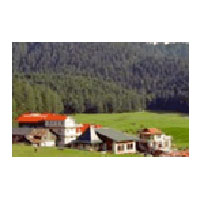 11D/10N
11D/10N
New Delhi - Shimla - Manali - Dharamshala - Pathankot - Chandigarh City
 12D/11N
12D/11N
Eastern Himalayas With Golden Triangle
New Delhi - Bagdogra - Darjeeling - Gangtok - Kalimpong - Agra - Jaipur
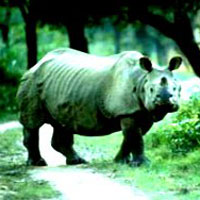 9D/8N
9D/8N
Exotic Wilderness of North - East Tour
New Delhi - Bagdogra - Darjeeling - Guwahati - Kaziranga
 8D/7N
8D/7N
Magical Meghalaya With Rare Wildlife
New Delhi - Guwahati - Kaziranga - Shillong
 11D/10N
11D/10N
New Delhi - Bagdogra - Darjeeling - Gangtok - Kalimpong
 11D/10N
11D/10N
Heritage Tour of Central India
New Delhi - Agra - Gwalior - Orchha - Bhopal - Jalgaon - Mumbai - Aurangabad
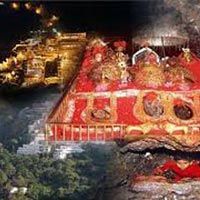 10D/9N
10D/9N
Srinagar - Anantnag - Patnitop - Jammu - Baramulla
 10D/9N
10D/9N
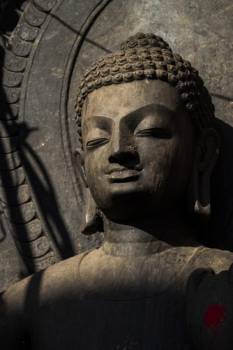 10D/9N
10D/9N
New Delhi - Varanasi - Bodhgaya - Rajgir - Nalanda - Patna - Vaishali - Kushinagar ..
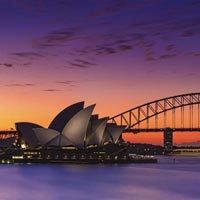 10D/9N
10D/9N
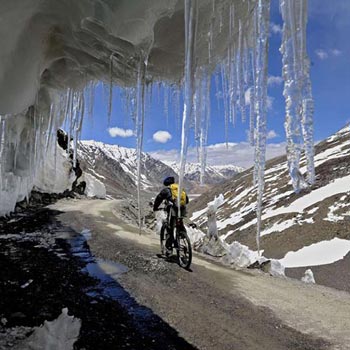 10D/9N
10D/9N
Kinnaur - Kaza - Spiti Romantic Package
Chandigarh City - Shimla - Kinnaur - Kaza - Digboi
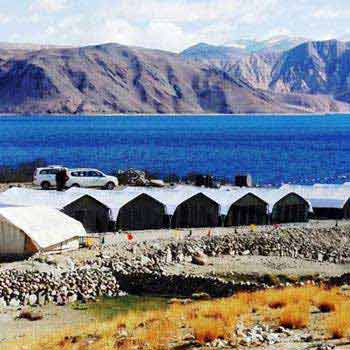 10D/9N
10D/9N
 10D/9N
10D/9N
South India - Kerala & Tamil nadu- 9 N/1..
Kovalam - Munnar - Alleppey - Madurai - Kochi - Kumarakom Thekkady
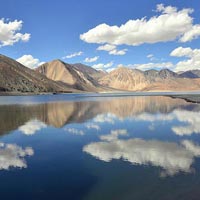 10D/9N
10D/9N
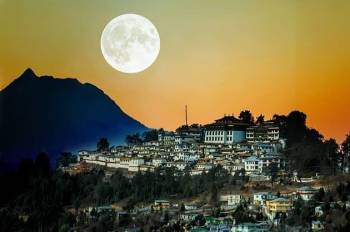 10D/9N
10D/9N
Tawang Kaziranga Shillong Tour
Guwahati - Shillong - Tawang - Kaziranga - Cherrapunji
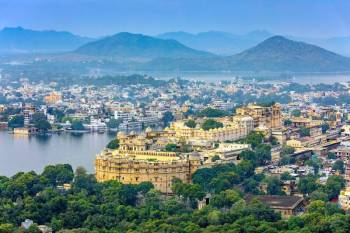 12D/11N
12D/11N
11 Nights 12 Days - Delhi Agra Rajasthan
New Delhi - Mathura - Agra - Jaipur - Ajmer - Pushkar - Udaipur - Mount Abu - Ranak..
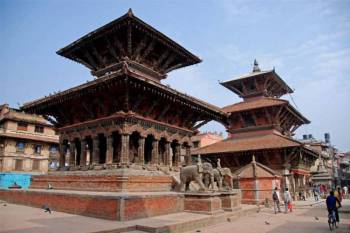 12D/11N
12D/11N
11 Nights - 12 Days Nepal Tour Package - 2
Prayagraj - Gorakhpur - Varanasi - Ayodhya - Kathmandu - Pokhara - Chitwan - janakpur
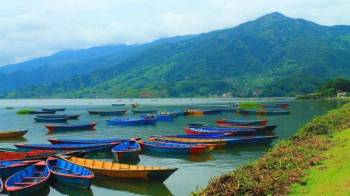 12D/11N
12D/11N
11 Nights - 12 Days Nepal Tour From Gora..
Prayagraj - Gorakhpur - Varanasi - Ayodhya - Kathmandu - Pokhara - Chitwan - janakpur
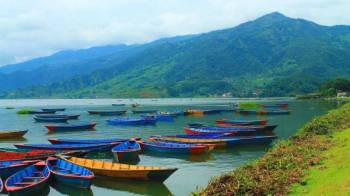 12D/11N
12D/11N
11 Nights - 12 Days Nepal Tour From Gora..
Prayagraj - Gorakhpur - Varanasi - Ayodhya - Kathmandu - Pokhara - Chitwan - janakpur
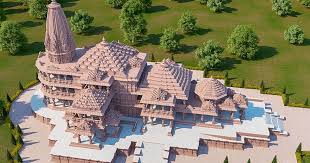 12D/11N
12D/11N
Prayagraj - Varanasi - Bodhgaya - Ayodhya - Pokhara - Chitwan - Parsa
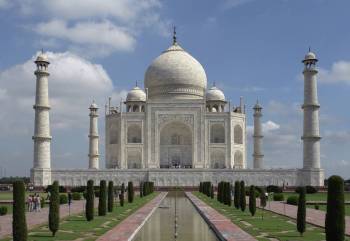 10D/9N
10D/9N
Rajasthan Tour Package 9 Night - 10 Days
Jaipur - Jodhpur - Mount Abu - Udaipur - Agra
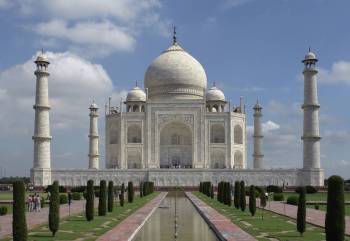 10D/9N
10D/9N
Rajasthan Tour Package 9 Night - 10 Days
Jaipur - Jodhpur - Mount Abu - Udaipur - Agra
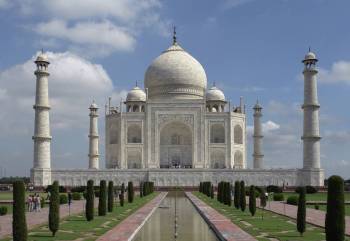 10D/9N
10D/9N
9N Agra - Jaipur - Udaipur - Mount Abu -..
Jaipur - Jodhpur - Mount Abu - Udaipur - Agra
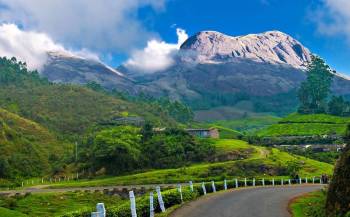 4D/3N
4D/3N